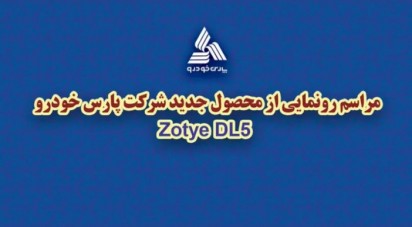| |
- مهار آتش سوزی انبار ضایعات مدیران خودرو در بم
- تیگو ۹ ٬ پرچمدار جدید چری ٬ رونمایی شد
- ارائه خدمات به مشتریان با ربات «مورنین»
- خدمات ویژه امدادخودرو سایپا همزمان با تعطیلات عید سعید فطر
- رشد ۲۰ درصدی تولید در ایران خودرو همراه با کاهش ۱۲ درصدی هزینه تمامشده محصولات/ ارتقای کیفیت برای مشتریان ملموس میشود
- دیدار مدیرعامل سایپایدک با کارکنان سایپایدک، امداد خودرو و همراه خودرو
- برنامه افزایش ظرفیت تولید روزانه پارس در سال جدید
- ادامه محدودیتها و ممنوعیتهای ترافیکی نوروزی در جادههای مازندران
- نیسان کیکس مدل 2025 سرانجام به نسخه چهار چرخ محرک تبدیل شد
- ادامه فراخوان متقاضیان محصول پارس پس از تعطیلات نوروزی
- کیفیت خدمات و تیراژ قطعات یدکی سایپا افزایش می یابد
- تاکید مدیرعامل ایرانخودرو بر ارایه محصول و خدمات باکیفیت به مشتریان
- در خدمات پس از فروش باید نگاه تحولی و عملکرد جهادی داشته باشیم
- زمان آغاز مرحله سوم طرح کالابرگ الکترونیک
The funerary offering consists of six human bones as well as ceramic objects, jade and shell beads, flint knives and animal bones.
"According to experts, the offering was made as a rain-invoking ritual in the 9th and 10th centuries, when the Maya had suffered two periods of drought," Mexico's National Institute of Anthropology and History (INAH) said in a statement.
The objects were found "carefully and selectively placed" at the bottom of a flooded cave that is linked by a 25-meter-long tunnel to a sinkhole cave or 'cenote' near the Kukulkan pyramid, INAH said.
Experts say the skeletal remains belong to at least six individuals - "probably sacrificed during a couple of intense periods of water shortages between 900-1,200 years ago."
Archeologists found remains of another 20 individuals and more than 100 animal bones at a depth of about 50 meters at the bottom of the cenote.
Ceramic objects and sculptures were also found, "most notably one of a standard bearer with features similar to (that of) a jaguar," INAH said.
The Yucatan Peninsula also yielded a figure with "goggled eyes, similar to the faces that appear on the Tlaloc-type vessels" found at the Balankanche network of sacred caves.
According to INAH, the discoveries recall the finds made at Chichen Itza's Sacred Cenote, which is known as the region's most important archeological findings.
Marine archaeologist Guillermo de Anda says the funerary offerings found in five cenotes in the Yucatan - are indicative of "a ceremonial practice (that has been) recently identified and is under study."
He added that the people whose remains were discovered "were not thrown from the surface, but instead were placed along the walls of the cenote."













